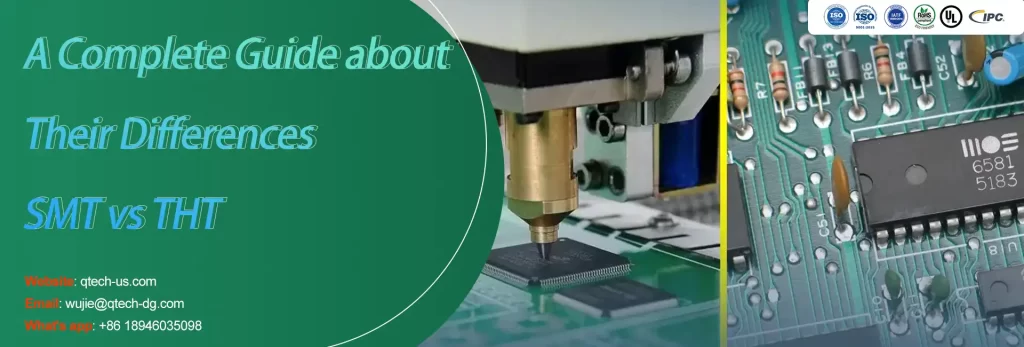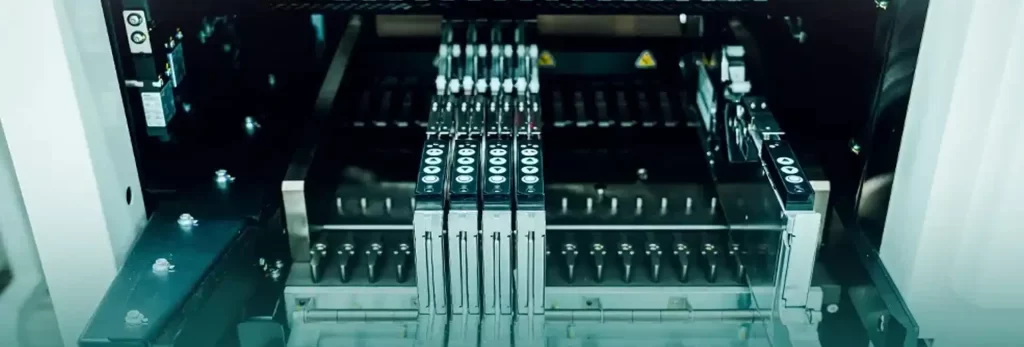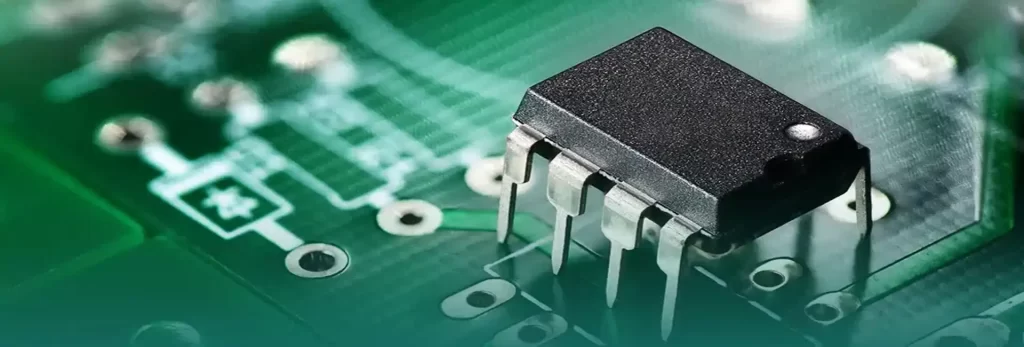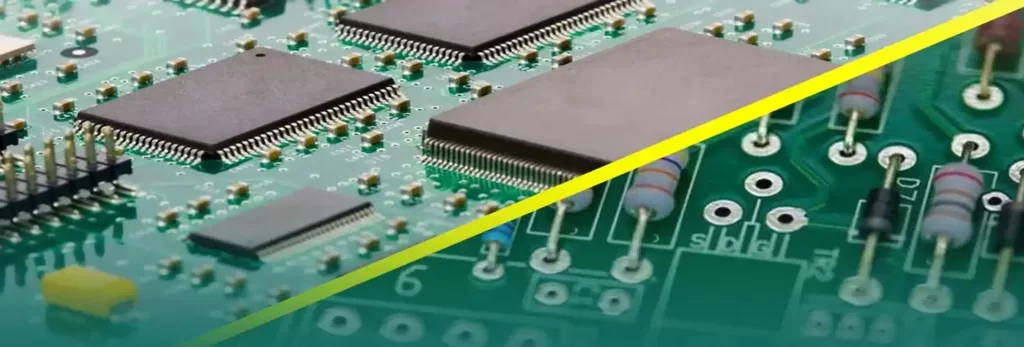
With the rapid development of science and technology, electronic products are entering our life at an alarming speed. In the field of electronic assembly, surface mount technology (SMT) and through-hole technology (THT) are two main manufacturing methods. This article will introduce the differences between SMT vs THT in detail, including process principles, equipment requirements, assembly efficiency and quality.
What is SMT technology?

SMT (Surface Mount Technology) is a technology that directly mounts electronic components on the surface of a printed circuit board (PCB). Electrical connection and mechanical fixation are achieved by mounting components on a printed circuit board. The small size of SMD components saves a lot of space and is suitable for high-density and miniaturized electronic products.

THT (Through Hole Technology) is to pass the leads of electronic components through the prefabricated holes of the printed circuit board and fix them on the board by welding. This technique is suitable for larger size components and is typically used in high power and high voltage applications.
▶SMT advantages
1. High packing density: Compared with traditional through-hole components, SMD components require less board surface space. In addition, the application of SMD components makes electronic products shrink by 60% in volume and 75% in weight.
2. High reliability: SMD is small in size, light in weight, with high reliability and impact resistance. The use of automated production enables soldering and placement with high reliability.
3. High frequency: Since the patch does not contain leads, both parasitic inductance and capacitance will decrease as the frequency increases.
4. Cost reduction: Due to the rapid development and wide application of chip components, the cost of chip components is also decreasing, and SMT PCB assembly simplifies the entire manufacturing process and reduces manufacturing costs. As far as SMC is concerned, the leads do not need to be reorganized, bent or cut, thus shortening the entire production process and improving production efficiency.
▶THT advantages
1. Firm assembly: Buried hole installation technology can firmly limit the assembled components;
2. Leads are more suitable for transmission: THT is also suitable for two-terminal current transmission in the schematic diagram of the given circuit board.
3. Easy disassembly and assembly: it is more convenient to manually remove and replace components on the PCB.

Equipment requirements
An SMT pick and place machine is a highly automated piece of equipment responsible for the precise placement of components onto printed circuit boards. The performance of the placement machine determines the production capacity and precision of the production line. Compared with THT, SMT equipment requires higher environmental conditions and operator skills.
The THT production line mainly includes plug-in machines, welding equipment and foot cutting machines, etc. Relatively speaking, equipment investment and maintenance costs of THT are lower. However, the THT process requires more manual operations and requires higher skills for operators.
Assembly efficiency
The SMT placement machine has the characteristics of high automation and high speed, and its assembly efficiency is significantly better than that of THT. The placement machine can realize fast and accurate placement of components, greatly shortening the production cycle. In addition, SMT uses lead-free solder, which meets environmental protection requirements.
In contrast, the THT assembly process is cumbersome and the production efficiency is low. Due to the need for manual operation, there are many human errors, resulting in uneven product quality. At the same time, toxic gases are produced in the THT welding process, which has an impact on the environment and human health.
Quality and reliability
SMT has good reliability and stability because it uses smaller components and a tighter connection to the printed circuit board. In addition, SMT connections have lower thermal stress, which helps improve product performance in high-temperature environments. However, SMT components are more affected by mechanical stress, so there may be problems in some high-vibration or high-shock environments.
In comparison, THT is slightly inferior to SMT in terms of reliability. While THT components are larger and susceptible to mechanical stress, their connections are susceptible to thermal stress. However, for high power and high voltage applications, THT has better performance because it can handle larger currents and heat dissipation.
Design flexibility
SMT has higher design flexibility and can realize double-sided assembly, thus making electronic products more compact. However, due to the small size of the components, the skill requirements of the SMT designer are high. In addition, SMT has poor compatibility with some special components, such as high voltage and high power components.
Applications
SMT is widely used in consumer electronics, communication equipment, medical equipment and other fields, especially for high-density, miniaturized and high-performance products. In addition, with the promotion of lead-free solder, the performance of SMT in terms of environmental protection has also been improved.
THT is mainly used in products with high power, high voltage and special components, such as industrial control equipment, power electronic equipment, etc. Although the application range of THT is relatively narrow, it still has irreplaceable advantages in some special fields.
Both SMT vs THT has their own advantages and disadvantages. THT has poor design flexibility. Since the components are large and take up a lot of space, it is not conducive to the miniaturization of electronic products. However, THT technology has good compatibility with special components and is easy to repair and modify. In contrast, SMT technology has better design flexibility while it is not easy to repair and modify. You should choose the electronic assembly method that suits you according to your needs.
SMT vs THT has their own advantages in the field of electronic assembly. With the development of science and technology, SMT technology has been widely used and has gradually become the mainstream of the electronics industry. However, in some special fields and application scenarios, THT technology still has significant value. Therefore, when designing and producing electronic products, engineers need to fully understand the characteristics and scope of SMT vs THT, so as to choose the best assembly method for different types of products.
In the future, with the electronics industry’s increasing demand for high-density, miniaturized and high-performance products, it is foreseeable that SMT technology will continue to dominate. However, THT technology is still competitive in some areas. Therefore, electronics manufacturers need to pay attention to the development trends of these two technologies SMT vs THT in order to make correct decisions in different scenarios.